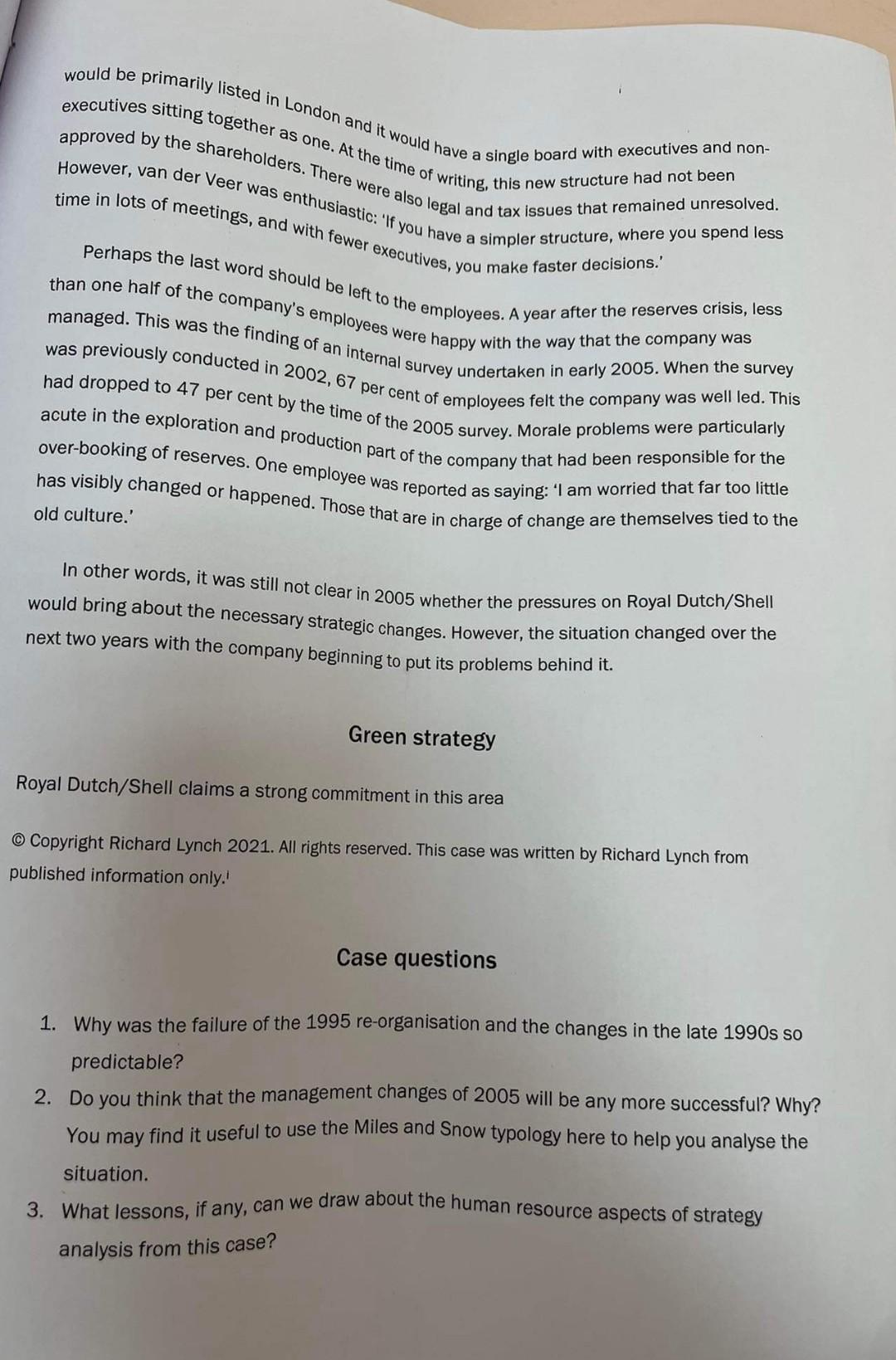Answered step by step
Verified Expert Solution
Question
1 Approved Answer
executives sitting together as one. At the time of writing, this new structure had not been would be primarily listed in London and it

executives sitting together as one. At the time of writing, this new structure had not been would be primarily listed in London and it would have a single board with executives and non- approved by the shareholders. There were also legal and tax issues that remained unresolved. However, van der Veer was enthusiastic: 'If you have a simpler structure, where you spend less time in lots of meetings, and with fewer executives, you make faster decisions.' Perhaps the last word should be left to the employees. A year after the reserves crisis, less than one half of the company's employees were happy with the way that the company was managed. This was the finding of an internal survey undertaken in early 2005. When the survey was previously conducted in 2002, 67 per cent of employees felt the company was well led. This had dropped to 47 per cent by the time of the 2005 survey. Morale problems were particularly acute in the exploration and production part of the company that had been responsible for the over-booking of reserves. One employee was reported as saying: 'I am worried that far too little has visibly changed or happened. Those that are in charge of change are themselves tied to the old culture.' In other words, it was still not clear in 2005 whether the pressures on Royal Dutch/Shell would bring about the necessary strategic changes. However, the situation changed over the next two years with the company beginning to put its problems behind it. Green strategy Royal Dutch/Shell claims a strong commitment in this area Copyright Richard Lynch 2021. All rights reserved. This case was written by Richard Lynch from published information only. Case questions 1. Why was the failure of the 1995 re-organisation and the changes in the late 1990s so predictable? 2. Do you think that the management changes of 2005 will be any more successful? Why? You may find it useful to use the Miles and Snow typology here to help you analyse the situation. 3. What lessons, if any, can we draw about the human resource aspects of strategy analysis from this case?
Step by Step Solution
★★★★★
3.50 Rating (157 Votes )
There are 3 Steps involved in it
Step: 1
The failure of the 1995 reorganization and the subsequent changes in the late 1990s were predictable ...
Get Instant Access to Expert-Tailored Solutions
See step-by-step solutions with expert insights and AI powered tools for academic success
Step: 2

Step: 3

Ace Your Homework with AI
Get the answers you need in no time with our AI-driven, step-by-step assistance
Get Started


